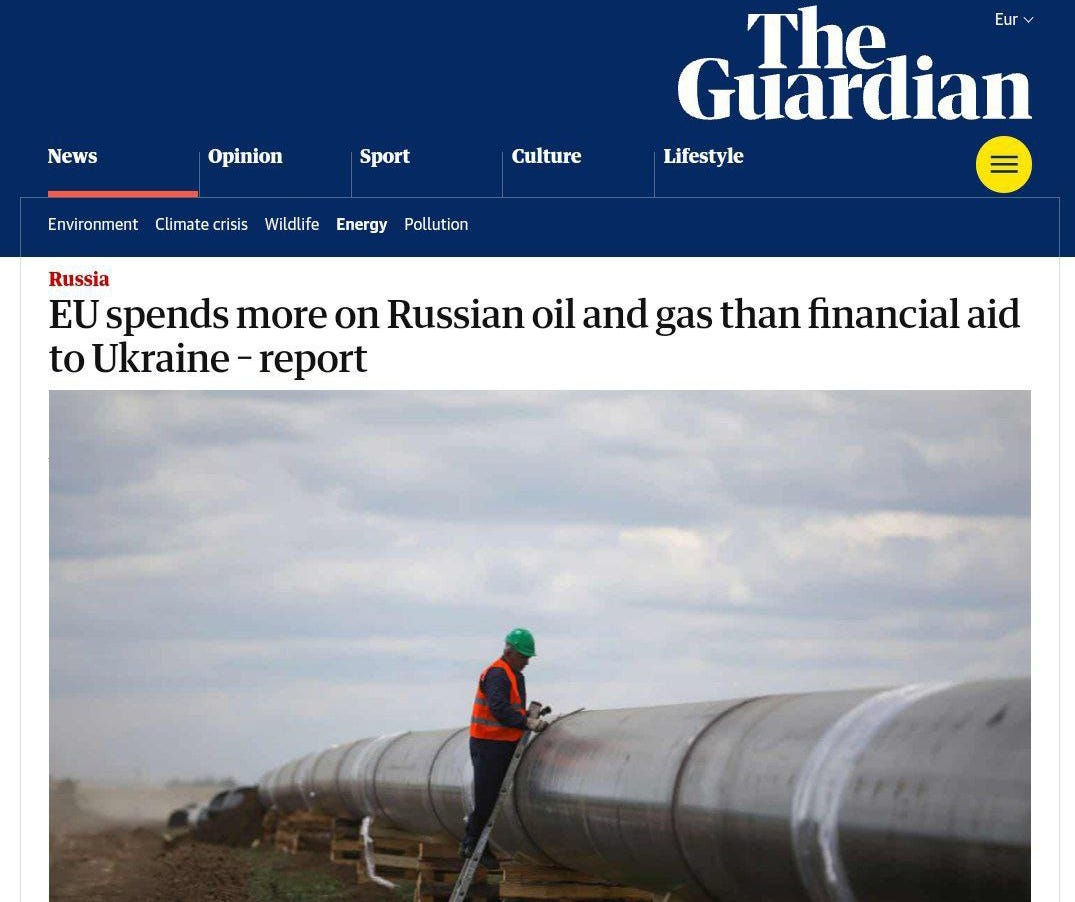Introduction: Europe’s Energy Crossroads
Europe faces a critical energy dilemma: how to ensure affordable, secure, and low-carbon electricity in the face of geopolitical uncertainty and rising demand. The war in Ukraine has exposed the continent’s dependency on Russian gas and uranium, while the push for renewables is hampered by intermittency and grid stability challenges61821. Nuclear energy, long controversial, is re-emerging as a key pillar of Europe’s energy future—but with a new twist: thorium-based reactors.
Thorium, a naturally abundant and potentially game-changing nuclear fuel, is now at the center of innovative projects across Europe and Russia. This article explores how these regions are advancing thorium energy, the implications for energy security, and the prospects for a cleaner, more resilient power system.
Why Thorium? The European and Russian Perspective
Thorium’s Advantages:
Abundance: Thorium is three times more prevalent than uranium and widely distributed, including in Norway, Turkey, and Russia.
Safety: Thorium reactors, especially molten salt designs, offer inherent safety features and cannot be easily weaponized, reducing proliferation risks.
Waste: They produce less long-lived radioactive waste, with some designs able to reduce radiotoxicity from hundreds of thousands of years to just a few centuries.
Energy Security: Thorium can be sourced domestically or from friendly neighbours, reducing reliance on unstable or adversarial suppliers3618.
Europe’s Thorium Momentum
Scandinavian Innovation: Denmark and Switzerland
Copenhagen Atomics, a Danish company, is at the forefront of thorium-molten salt reactor (TMSR) development. Their vision: factory-built, containerized 100 MW reactors that can be deployed rapidly and almost anywhere, offering electricity at potentially half the cost of today’s nuclear plants241319. These reactors are designed to:
Use thorium and nuclear waste as fuel, reducing both costs and waste storage times (from 100,000 to 300 years)2.
Operate safely at low pressure, with molten salt acting as both fuel carrier and coolant.
Be manufactured on assembly lines, enabling mass deployment and scalability.
In 2026, Copenhagen Atomics and Switzerland’s Paul Scherrer Institute (PSI) will conduct Europe’s first critical experiment on a thorium molten salt reactor, a milestone for the continent’s nuclear R&D. PSI, Switzerland’s premier nuclear research institute, brings deep expertise in reactor safety and engineering.
Western Europe: The Franco-Dutch Thorizon
Thorizon, a Franco-Dutch scale-up, is developing the Thorizon One molten salt reactor, recently endorsed by the EU Industrial Alliance on Small Modular Reactors (SMRs). This 100 MW reactor can power 250,000 homes or a data center, and supply industrial heat at 550°C—all while consuming long-lived nuclear waste16. The EU’s backing signals strong institutional support for advanced nuclear in Europe’s energy transition.
Switzerland: Transmutex’s Accelerator-Driven Thorium Reactor
Swiss startup Transmutex, founded by CERN scientists, is pioneering a reactor that combines thorium with a particle accelerator. This design can shut down the reaction in milliseconds and drastically reduces waste longevity—from 300,000 years to just 30014. Transmutex has attracted significant investment and is negotiating with several European governments to build demonstration plants.
The Netherlands: Academic Advocacy
Dutch researchers at TU Delft and the Samofar project have long argued that thorium reactors are essential for the Netherlands and Europe’s energy future, citing their safety and waste benefits15.
Policy and Political Support
The EU Nuclear Alliance, a coalition of 11 pro-nuclear countries led by France, is pushing for nuclear—including advanced thorium and SMR technologies—to be central in the EU’s Affordable Energy Action Plan. Their argument: only nuclear can provide the reliable, low-carbon baseload needed to stabilize the grid and achieve net-zero by 2050. The European Commission is now preparing a framework to accelerate nuclear innovation and deployment.
Russia’s Thorium Ambitions
Scientific Advances and Resource Base
Russia possesses significant thorium reserves, particularly in monazite sands, and has a long tradition of nuclear engineering319. Russian scientists have recently improved extraction technologies, achieving up to 90% recovery rates for thorium and uranium from monazite concentrates3. This not only supports the thorium fuel cycle but also boosts the rare earth elements (REE) industry, vital for high-tech and green technologies3.
The Thorium-Uranium Fuel Cycle
Russian research institutions, such as the Far Eastern Federal University and Ozersk Technological Institute, are optimizing the thorium-uranium cycle. This approach offers several advantages:
Eco-friendliness: The cycle generates less nuclear waste and avoids the accumulation of plutonium3.
Efficiency: Thorium-based cores can be smaller and run continuously for up to 50 years without refueling, enhancing operational stability3.
Synergy with Fertilizer Production: By-products of monazite processing can be used in agriculture, creating new economic opportunities3.
Rosatom: Global Nuclear Powerhouse
Rosatom, Russia’s state nuclear corporation, is a leader in exporting nuclear technology, including SMRs and floating reactors1120. While its current focus is on uranium-fueled designs, Rosatom is actively involved in thorium R&D and international partnerships510. Recent agreements, such as with India’s Maharashtra state to co-develop a thorium-powered SMR, highlight Russia’s intent to commercialize thorium reactors globally510.
Rosatom’s integrated approach—design, construction, fuel supply, and waste management—makes it a formidable player in the global nuclear sector1120. Its RITM-200 and planned RITM-400 reactors are already powering icebreakers and remote regions, and could be adapted for thorium use in the future11.
Energy Security, Geopolitics, and the Thorium Opportunity
Europe’s Nuclear Dilemma
Europe’s energy security is threatened by its dependence on Russian gas and uranium. Uranium imports from Russia and Kazakhstan account for nearly half of the EU’s supply, and enrichment bottlenecks add further risk618. The war in Ukraine has underscored the need for diversification and domestic resilience1820.
Thorium offers a way out:
Supply Security: Thorium is abundant in Europe, notably in Norway and Turkey, reducing reliance on adversarial suppliers19.
Grid Stability: Thorium reactors, especially SMRs, can provide flexible, dispatchable power to complement renewables and stabilize the grid2121621.
Non-Proliferation: The inability to weaponize thorium reduces geopolitical tensions around nuclear energy1419.
Russia’s Nuclear Diplomacy
Russia leverages its nuclear expertise and export capacity to maintain influence, especially in Eastern Europe, Central Asia, and Africa. Its “turnkey” model—offering everything from construction to fuel to waste disposal—has made Rosatom a partner of choice for many countries1120.
The Path Forward: Challenges and Prospects
Technical and Economic Hurdles:
Scaling Up: Thorium reactors, especially molten salt designs, are still in the prototype or early demonstration phase in Europe241316.
Regulation: Licensing new reactor types is complex and slow, requiring robust safety validation and public trust1316.
Cost: Upfront investments are high, though modularity and mass manufacturing could drive down costs over time216.
Political Will and Coordination:
EU Strategy: The EU must harmonize policy, fund R&D, and create a supportive ecosystem for advanced nuclear1221.
International Collaboration: Partnerships between European, Russian, and other global players can accelerate learning and deployment—if geopolitical tensions are managed5101314.
Conclusion: Europe and Russia at the Forefront of the Thorium Age
Europe and Russia are poised to play leading roles in the global thorium revolution. European startups and research institutes are pushing the boundaries of reactor design, while Russia brings deep resources and engineering know-how. If successful, thorium energy could:
Deliver secure, affordable, and low-carbon power for decades to come.
Reduce strategic vulnerabilities linked to fossil fuels and uranium.
Support the continent’s climate goals and industrial competitiveness.
The next decade will be critical. As prototypes become commercial reactors and policy frameworks mature, thorium could shift from a scientific promise to a cornerstone of Europe and Russia’s energy future.







